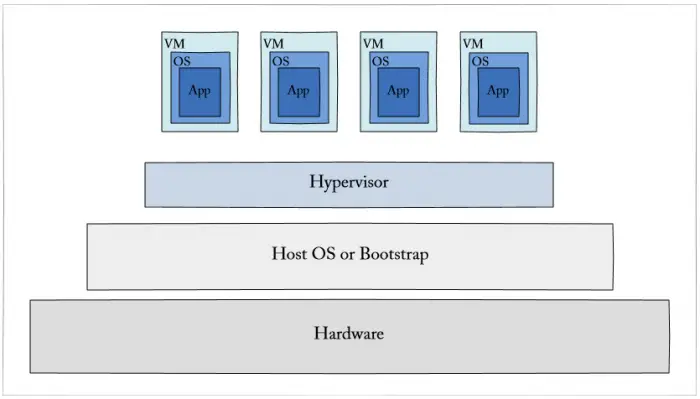The term 'Virtualization' can be used in many respect for computers. It is the process of creating a virtual environment of something which may include hardware platforms, storage devices, OS, network resources, etc. The cloud's virtualization mainly deals with server virtualization and how it works, and why it is termed so?
Defining Virtualization
Virtualization is the ability that allows sharing the physical instance of a single application or resource among multiple organizations or users. This technique is done by assigning a name logically to all those physical resources & provides a pointer to those physical resources based on demand.
Over an existing operating system & hardware, we generally create a virtual machine that and above it, we run other operating systems or applications. This is called Hardware Virtualization. The virtual machine provides a separate environment that is logically distinct from its underlying hardware. Here, the system or the machine is the host & the virtual machine is the guest machine. This virtual environment is managed by firmware, which is termed as a hypervisor.
Figure - The Cloud's Virtualization:

There are several approaches or ways to virtualizes cloud servers.
These are:
- Grid Approach: where the processing workloads are distributed among different physical servers, and their results are then collected as one.
- OS - Level Virtualization: Here, multiple instances of an application can run in an isolated form on a single OS
- Hypervisor-based Virtualization: which is currently the most widely used technique
With hypervisor's virtualization, there are various sub-approaches to fulfill the goal of running multiple applications & other loads on a single physical host. A technique is used to allow virtual machines to move from one host to another without shutting down. This technique is termed as "Live Migration". Another technique is used to actively load balance among multiple hosts to utilize those available resources in a virtual machine efficiently. The concept is termed as Distributed Resource Scheduling or Dynamic Resource Scheduling.
Types of Virtualization
The virtualization of the cloud has been categorized into four different types based on their characteristics. These are:
- Hardware Virtualization
- Full Virtualization
- Emulation Virtualization
- Para-virtualization
- Software Virtualization
- OS Virtualization
- Server Virtualization
- Storage Virtualization
How Virtualization Works in Cloud
Virtualization plays a significant role in cloud technology and its working mechanism. Usually, what happens in the cloud - the users not only share the data that are located in the cloud-like application but also share their infrastructures with the help of virtualization. Virtualization is used mainly to provide applications with standard versions for cloud customers. With the release of the latest version of an application, the providers can efficiently provide that application to the cloud and its users, and it is possible using virtualization only. By using this virtualization concept, all servers & software other cloud providers require those are maintained by a third-party, and the cloud provider pays them on a monthly or yearly basis.
In reality, most of today's hypervisors use a combination of different types of hardware virtualization. Mainly virtualization means running multiple systems on a single machine but sharing all resources (hardware) & it helps to share IT resources to get benefits in the business field.
Difference Between Virtualization and Cloud
- Essentially there is a gap between these two terms, though cloud technology requires the concept of virtualization. Virtualization is a technology - it can also be treated as software that can manipulate hardware. At the same time, cloud computing is a service that is the result of manipulation.
- Virtualization is the foundation element of cloud computing, whereas Cloud technology is the delivery of shared resources as a service-on-demand via the internet.
- Cloud is essentially made-up of the concept of virtualization.
Advantages of Virtualization
- The number of servers gets reduced by the use of the virtualization concept.
- Improve the ability of technology.
- The business continuity was also raised due to the use of virtualization.
- It creates a mixed virtual environment.
- Increase efficiency for the development and test environment.
- Lowers Total Cost of Ownership (TCO).
Features of Virtualization
- Partitioning: Multiple virtual servers can run on a physical server at the same time.
- Encapsulation of data: All data on the virtual server, including boot disks, is encapsulated in a file format.
- Isolation: The Virtual server running on the physical server is safely separated and don't affect each other.
- Hardware Independence: When the virtual server runs, it can migrate to a different hardware platform.